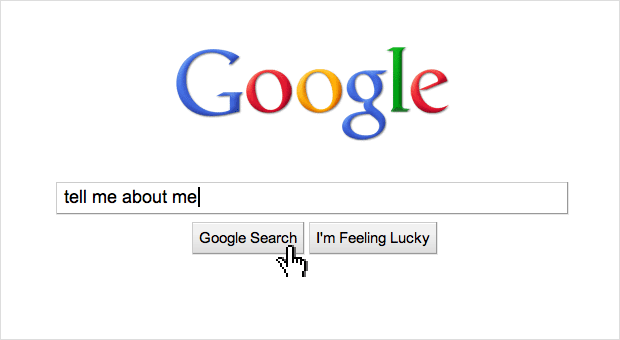Skim, scan, click, post, watch, check-in, comment, chat, and like. Chances are you live this every day for hours at a time. And sure, sometimes the content is interesting, but did you ever think that the mechanics of what you’re doing is interesting? Or that what you do online could be visually appealing? Me neither. And right now, I’m eating my words. The creative mind has triumphed yet again, taking something abstract and maybe mundane and rearranging it into something dynamic, vibrant, and artful. The next chapter in digital storytelling is writing itself with the meta-internet video. The visual experience of experiencing the internet is coming out hot, hip, and viral.
Like most things internet-savvy, Google was one of the first to put a mainstream mark on this trend. Remember their Super Bowl commercial? Who’d have really thought that looking at a search bar and returns for nearly sixty seconds could ever be appealing. But it was, and it was highly emotive, too. Romance is powerful, and a wholesome foreign daydream made that sparse white screen move oh-so much closer to the heart.
But the meta-internet video, isn’t just about voyeuristic searches. No, we’re actually using them to re-write a little bit of history and religion, fluffing it up around the edges, so it feels more comfortable and familiar. A colleague of mine forwarded The Digital Story of the Nativity video that’s swirling around out there on the internet. It uses digital technologies to tell the Christmas story, complete with emails from Mary, tweets by Joseph, and King Melchior picking up a sweet deal on gold at Amazon.com. It starts with some unknown person (possibly you or me) typing in their search query at Google.com.
Japanese indie rock band, Sour, just set a new standard for amazing with their latest music video “Mirror.” The video, although it’s more of an immersive, interactive experience, begins with, you guessed it, the Google.com search bar. The twist is that if you take the plunge and allow the video to connect with your Facebook, Twitter, or webcam, you become an integral part of the composition. Alarming and captivating, you watch your own cyber identity fragment and stream into the rest of the digital collective. It’s quite remarkable to be suspended in that space where vulnerability and connectivity have an equally terrifying and fascinating hold.
I think we’re at the beginning of the meta-internet video era. This evolution of digital storytelling is a game changer because it’s primed for big, personal wows. As a communication vehicle, it can get closer to the subject than ever before—beyond the familiar landscape of the everyday digital highway and into the back roads of individuals. It’s versatile, too, enough that if your target is a larger social tribe, with the right research and creative execution, you can reach a group and simultaneously make intimate, personal connections.
